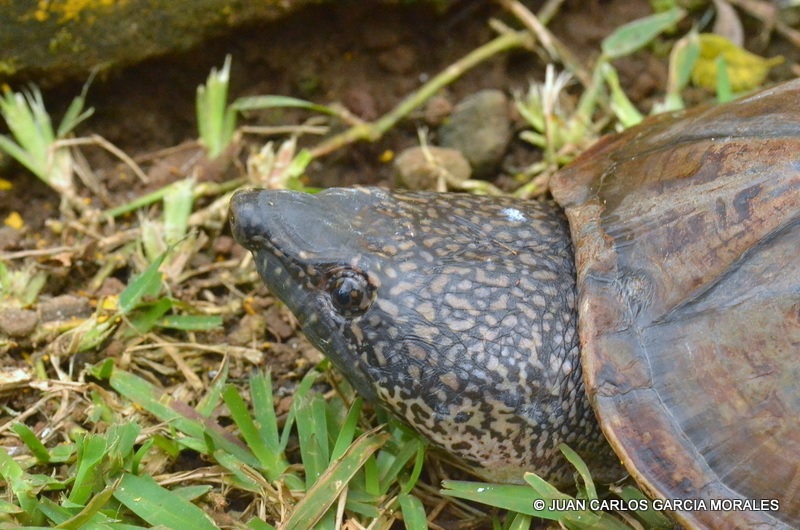The three-keeled turtle or ‘Guao’ is considered dangerous, since with its large mouth it can cut off limbs of its predators or the fingers of those who try to grab it.
(La Jornada Maya).- The ‘Guao’, also known as the three-keeled or three-edged turtle, features three ridges that are found along its shell, which is why it is also known as the three-crested turtle.
In the Southeast of Mexico, in Tabasco and Campeche they are called Guao turtle with three loins; it is a species of the semi-aquatic type and is the largest turtle in the family.
Jacqueline May Díaz, spokeswoman for the environmental organization ‘Desarrollo y Medio Ambiente’, points out that an adult three-backed tortoise can measure up to 36 centimeters in length, a size that exceeds the other members of the Kinosternidae family.
“The color they present can vary from a brown tone to a green one. Its shell does not have plates or drawings like other kinds of turtles and its plastron is small, revealing more parts of its body.”
She explains that the shape of its head is long and oval and it is considered a passive predator that usually attacks from the bottom to the surface.
The biologist Yanec Jiménez Ruiz said that the three-backed turtle has a carnivorous diet, including river shrimp, crabs, frogs, snails, insects and small fish.
“Another aspect to note is the cannibalism that exists among members of the same species and other smaller turtles. In general, these turtles like to feed at night, maintaining a passive conduct during the day.
Sub-adult three-backed tortoises supplement their diet with herbs and algae more frequently, and this continues for the rest of their lives.
“This freshwater species is usually found in the states of Campeche, Chiapas, Tabasco, Veracruz and southern Quintana Roo in Mexico and northern Honduras; but it has a presence in Guatemala and Belize”, details May Díaz.
“The three-backed turtle likes calm and slow moving waters, in addition to looking for places where there is a lot of vegetation,” she continued.
The life expectancy of keeled turtles is estimated to be 50 years, which is above the average age for freshwater turtles.
Copulation is based on aggression and persecution by the male, when he manages to subdue the female, the act is executed. This species lays six eggs up to three times per reproductive season, says Jiménez Ruiz.
The incubation period lasts approximately three months and unlike other species, sex is given by genetics and not by the incubation temperature.
The females are larger in size, but the males have longer and broader tails.
Since its birth, the baby three-backed turtle is a target for a wide range of predators, in addition to the reduction of its habitat, pollution and its adoption as a domestic pet.
Added to the above factors is its use for culinary purposes. The above problems have succeeded in greatly reducing its population.

TYT Newsroom


